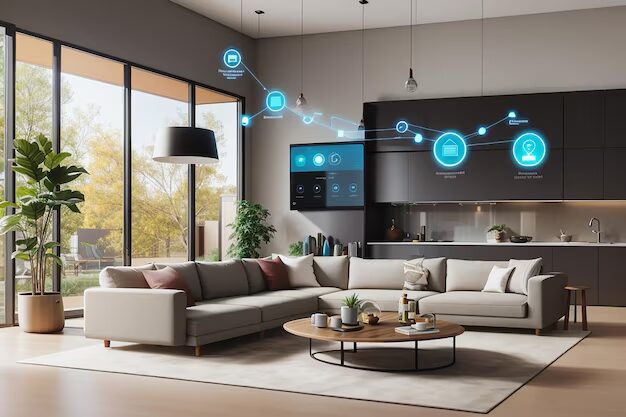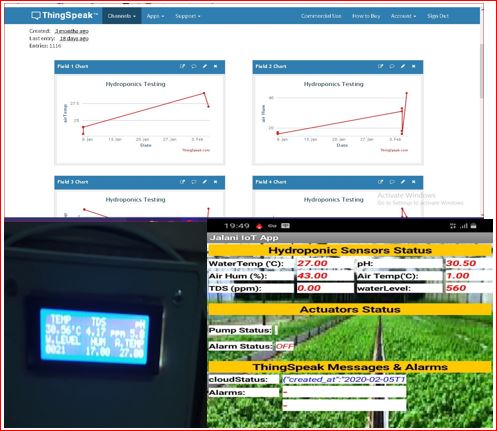
Introduction
In recent years, the concept of smart homes has transitioned from a futuristic dream to a tangible reality, fundamentally altering how we live and interact with our living environments. As technology advances, smart homes are becoming increasingly integrated with the Internet of Things (IoT), artificial intelligence (AI), and automation. This write-up explores the rise of smart homes, their benefits and challenges, and whether society is prepared for a fully automated lifestyle.
Understanding Smart Homes
A smart home is defined as a residence equipped with devices that can be controlled remotely or automated to perform specific tasks. These devices communicate through the internet, allowing homeowners to manage various aspects of their home environment, such as lighting, temperature, security, and entertainment systems.
Key Features of Smart Homes
- Automation: Smart homes automate routine tasks, such as adjusting lighting based on occupancy or scheduling appliances to run at specific times.
- Connectivity: Devices are interconnected, enabling seamless communication and centralized control through smartphones or voice commands.
- Remote Access: Homeowners can monitor and control their smart devices from anywhere, providing flexibility and peace of mind.
- Energy Efficiency: Smart devices optimize energy consumption, helping to reduce utility costs and environmental impact.
The Evolution of Smart Homes
The journey of smart homes began in the early 20th century with simple automation systems. However, the real transformation occurred with the advent of the internet and IoT technologies, which enabled devices to communicate and be controlled remotely.
Historical Milestones
- Early Innovations: The introduction of devices like electric vacuum cleaners and automatic sprinklers laid the groundwork for home automation.
- X-10 Technology: In the 1970s, X-10 technology allowed remote control of household appliances, marking a significant milestone in home automation.

- The IoT Era: The 2010s saw the rise of IoT, enabling voice-activated assistants like Amazon Alexa and Google Assistant to streamline home automation.

Benefits of Smart Homes
The rise of smart homes brings numerous advantages that enhance convenience, security, and energy efficiency.
Read Level Up Fast: Top Tips to Dominate Any FPS Game Like a Pro
1. Convenience and Comfort
Smart homes allow homeowners to control multiple devices with a single app or voice command. This convenience extends to:
- Automated Routines: Homeowners can create schedules for devices, such as adjusting the thermostat before arriving home or turning off lights when leaving.
- Personalized Settings: Smart devices can be customized to individual preferences, creating a comfortable living environment.
2. Enhanced Security
Smart home technology significantly improves home security through:
- Smart Locks and Cameras: Homeowners can monitor their property remotely, receiving real-time alerts for suspicious activities.

- Integrated Security Systems: Smart homes can incorporate motion sensors, doorbell cameras, and alarm systems, providing comprehensive security coverage.

3. Energy Efficiency
Smart devices contribute to energy savings by:
- Smart Thermostats: These devices learn user habits and optimize heating and cooling, reducing energy consumption.
- Automated Lighting: Smart lighting systems can turn off lights in unoccupied rooms, further decreasing electricity bills.
Read How to Become a Professional Gamer: A Comprehensive Guide
Challenges of Smart Homes
Despite the numerous benefits, the rise of smart homes also presents several challenges that must be addressed.
1. Data Privacy and Security
With increased connectivity comes the risk of data breaches and unauthorized access. Homeowners must ensure robust security measures are in place to protect personal information.
2. Interoperability Issues
Many smart devices are manufactured by different companies, leading to compatibility issues. Standardization efforts are needed to ensure seamless integration across devices and platforms.
3. Cost and Accessibility
The initial investment in smart home technology can be significant, potentially limiting access for some homeowners. As technology advances, prices are expected to decrease, making smart homes more accessible.
Are We Ready for a Fully Automated Life?
The question of whether society is ready for a fully automated life is complex. While many people embrace the conveniences offered by smart homes, concerns about privacy, security, and reliance on technology persist.
Read Xbox vs PlayStation: Which is the Better Gaming Console?
Considerations for Readiness
- User Education: As smart home technology becomes more prevalent, educating users about its benefits and potential risks is essential.
- Infrastructure Development: The expansion of internet connectivity and smart city initiatives will play a crucial role in facilitating the adoption of smart homes.
- Cultural Acceptance: Societal attitudes toward technology and automation will influence the speed at which smart homes become mainstream.
Future Trends in Smart Homes
The future of smart homes looks promising, with several trends expected to shape their evolution:
- Integration of AI: Artificial intelligence will enhance smart home systems, enabling predictive analytics and personalized experiences.
- Sustainability Initiatives: The adoption of green technologies, such as solar panels and energy-efficient appliances, will drive sustainable living in smart homes.
- Growth of Smart Communities: Developers will increasingly incorporate smart technologies into new construction projects, creating connected living spaces.
Related Websites
- Investopedia: Smart Home – Definition and How They Work – A comprehensive overview of smart homes, including their features and benefits.
- Trusted Technology: Why Smart Homes are the Future – Insights into the rise of smart homes and their impact on modern living.
- McFall Real Estate: The Rise of Smart Homes – An exploration of how technology is transforming home automation.
FAQs
1. What is a smart home?
A smart home is a residence equipped with devices that can be controlled remotely or automated, allowing homeowners to manage various aspects of their living environment.
2. What are the benefits of smart homes?
Smart homes offer convenience, enhanced security, energy efficiency, and personalized living experiences.
3. What challenges do smart homes face?
Challenges include data privacy concerns, interoperability issues, and the cost of technology.
4. Are we ready for fully automated homes?
While many embrace smart home technology, concerns about privacy and reliance on technology indicate that readiness varies among individuals.
5. What trends are shaping the future of smart homes?
Future trends include the integration of AI, sustainability initiatives, and the growth of smart communities.
Conclusion
The rise of smart homes represents a significant shift in how we live and interact with our surroundings. As technology continues to advance, smart homes offer unprecedented convenience, security, and energy efficiency. However, addressing challenges such as data privacy and interoperability will be crucial for widespread adoption. As society navigates these complexities, the journey toward a fully automated life is both exciting and thought-provoking, promising a future where our living spaces are more intelligent and responsive than ever before.

